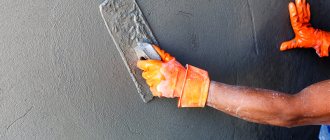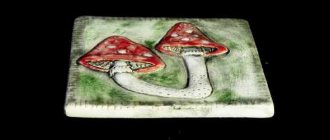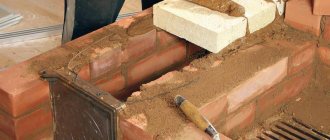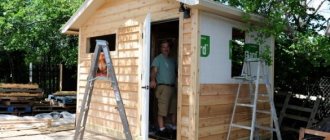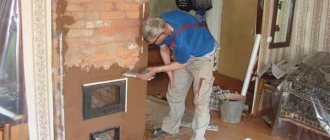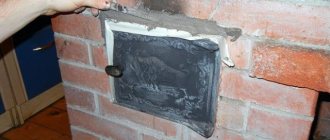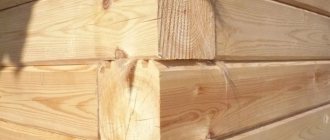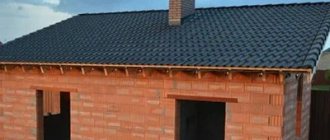Processing concrete and wood products with liquid glass has been used for quite some time. This substance is added to cement, which speeds up the process of setting the mixture; it is used for waterproofing basements, for treating swimming pools and other hydraulic structures. Liquid glass in its original state resembles transparent or whitish crystals obtained by melting soda and silicon dioxide in certain proportions under pressure. This material was invented in the 19th century and is still actively used in construction and renovation work due to its unique properties.
For construction work, crystals are diluted with water, but most often the material is supplied in industrial packaging. When exposed to open air, LC dries instantly, forming a protective film, which allows it to be used for impregnation of products and structures in order to provide protection from moisture, fire and rotting.
Kinds
There are several types of liquid glass. They are divided depending on the main substance used in the mixture.
Sodium
The formation based on sodium salts is characterized by a viscous structure, high strength and penetrating ability. It perfectly resists open fire and high temperatures, and the composition is also able to retain its shape even when the base on which it was applied is deformed.
Potassium
This material contains potassium salts. The structure of the mixture is loose, the composition has increased hygroscopicity, and forms a matte surface. Potassium compounds resist excessive heat and deformation well.
Lithium
It is used to provide the treated surface with protection from thermal effects. Produced in small batches. For some work, combined mixtures are used.
Liquid thermal insulation of facade
Insulation of facades with liquid insulation is carried out from the outside of the building. Depending on the physical, chemical and operational characteristics, there are several types of liquid thermal insulation:
- Penoizol;
- Teplokor;
- Armor;
- Corundum;
- Liquid plug;
- Liquid travertine.
Penoizol
Liquid material that fills the cavity between the wall and the curtain wall. It is manufactured directly on the construction site from several components that are mixed and then applied with a compressor with a spray nozzle.
Penoizol belongs to the class of foam plastics. Unlike solid analogues, it fills all cracks, creating a monolithic barrier from the external environment.
Insulation of facades with liquid foam insulation protects the interior not only from heat loss, but also from noise. Its porous structure contributes to good sound insulation.
If you protect it from moisture, its service life will be 50-75 years. Penoizol practically does not burn and complies with modern fire safety standards. After drying, it does not release compounds harmful to the human body.
The drying time is 5-7 hours, and the initial setting time is 15-20 minutes. This allows you to process up to 50 m2 of wall per day.
Penoizol absorbs moisture and steam. Therefore, walls below ground level can only be treated with good waterproofing. Penoizol has a high shrinkage rate and emits a harmless but unpleasant odor.
Penoizol is often applied to a mesh of polymer fibers. This way you can apply a thick layer without worrying about integrity.
Teplokor
Liquid thermal insulation of facades Teplokor belongs to the class of thermal paints. Thermal paint is a material for creating a thin energy-saving barrier between the wall and the environment.
The paint contains microscopic balls that prevent the transfer of heat from the inside of the wall to the outside. After complete drying, it forms a matte barrier, the so-called “thermal mirror”.
Teplokor is a popular type of liquid finishing. It is used to treat walls inside and outside the building. The composition includes acrylic-based polymers, microscopic glass-ceramic hollow balls, and additives. To obtain a wide palette of colors, pigments of artificial origin are used.
Teplokor effectively protects against heat loss. It is easy to apply to almost any surface. The paint can be used to treat wooden, brick, and concrete walls of public, industrial, residential buildings, as well as cottages and country houses.
Teplokor protects walls from the aggressive action of precipitation. Fungus and mold do not develop on the surface treated with it. Thermal insulation paint complies with modern fire safety standards.
The wall surface does not require special preparation. It is enough to clean it of dirt and old paint, and then treat it with acrylic-based primer. Teplokor does not contain solvents, so it does not emit an unpleasant odor.
Armor
Liquid thermal insulation for facades Bronya is widely used for processing brick, concrete buildings, as well as metal structures. The structure of the material is similar to thick white sour cream.
The thickness of the protective layer is 1-3 mm. Such impressive performance is achieved due to a unique and thoughtful composition. The basis of liquid thermal insulation Bronya is an acrylic-based binder. Fine ceramic granules of a closed structure are responsible for thermal conductivity.
To achieve layability and speed up drying, the composition includes catalysts and fixatives. To prevent the development of corrosion and fungus, the composition includes special substances.
The armor provides high-quality protection for house facades, as well as pipelines and other large-sized metal vessels from moisture and temperature changes. The protection does not lose its properties in the temperature range from -60 to +270 degrees.
Characteristics
ZhS is a material of a viscous, viscous consistency, which dries quickly in air and forms a monolithic, durable, water-impervious base.
Liquid glass, sodium and potassium, have the following characteristics:
- Prevents water from penetrating through the surface treated with the solution.
- Protects wooden and concrete surfaces from the penetration of fungus and pathogens.
- Prevents the accumulation of static voltage.
- Protects the treated surface from fire.
- Protects the base impregnated with the solution from the effects of acidic compounds.
- Helps accelerate the drying process and strength gain of cement mortars.
Composition and properties
The quality and scope of a substance is determined by the content of its individual components. The composition of liquid glass is distinguished by the presence of sodium silicates or potassium nitrates, as well as water. Two types of technology are used:
- firing soda together with quartz sand;
- autoclave alkaline treatment of silicon dioxide.
After cooling and hardening, the material becomes inaccessible to the penetration of air or water. Although the substance itself easily penetrates into the base, retains the properties of viscosity and strong adhesion, and has the following qualities:
- water-repellent effect;
- antibacterial effect;
- antistatic characteristics;
- ability to fill pores with increasing density;
- fire resistance;
- acid resistance.
Waterproofing, fireproof and other characteristics of liquid glass determine the important advantages of the material:
- high penetrating ability and excellent adhesion;
- fire resistance with a low level of thermal conductivity, which helps when carrying out thermal insulation work;
- elasticity, so that shrinkage of the building does not impair waterproofing;
- application at high humidity levels;
- environmental friendliness of the mixture and its safety for humans.
These parameters are combined with relatively low cost and accessibility for various categories of citizens. The construction cost does not increase significantly.
Liquid glass, in addition to waterproofing properties, has many other advantages, namely:
- absolute safety and environmental friendliness;
- fire resistance;
- good penetrating ability;
- high adhesion;
- low level of thermal conductivity, which allows it to be used for thermal insulation;
- antiseptic effect, therefore this material has found its use in gardening when processing trees, in finishing work to combat fungus and mold, etc.;
- good elasticity when drying, so that when the house shrinks, the integrity of the waterproofing is not compromised;
- relatively affordable cost;
- Possibility of use even in conditions of excessive humidity.
It is also worth noting that this substance has a high drying rate, so working with it requires some experience.
Advantages and disadvantages
When working with RC in construction or during repairs, the following advantages are revealed:
- this material helps to quickly repair small cracks in concrete products and wood building structures;
- coating with liquid glass makes it possible to obtain a durable film that helps waterproof any surface;
- material consumption is low, while the cost of liquid glass is affordable for most categories of the population, so it can be used for work at home;
- if used correctly, the coating service life will be at least five years;
- Liquid glass for waterproofing can be used in places with unstable humidity levels.
There are also negative features of JS. The disadvantages include:
- this material is not used for processing brick buildings;
- ZhS cannot be the only material for obtaining reliable waterproofing; it is usually used together with other materials;
- for processing structures and products of reinforced concrete, it is advisable to have certain skills, since such solutions instantly dry and harden;
- To obtain a better coating and protect the base, it is necessary to apply a primer before the LC.
How to choose?
When choosing liquid glass for waterproofing and other applications, you must carefully familiarize yourself with its composition. There are 2 types:
| Glass type | Mode of application |
| Sodium | Base reinforcement |
| Mold casting | |
| Fireproof treatment | |
| Potassium | Exterior painting work |
| Use in fire-resistant and silicate paints | |
| Protection of surfaces in chemically aggressive environments |
The potassium composition of the product is more often used for external painting work.
The properties of the potassium composition are similar to sodium, however, it does not give reflections on the treated surface, and is also impervious to weather influences and acid exposure. This option is more expensive, but has higher technical qualities. When purchasing, pay attention to the packaging. It must be tight and hermetically sealed, since the glass quickly hardens due to air entry. The substance is stored for up to 12 months at any temperature.
Application areas of liquid glass
Housing systems are used in general construction work and for solving everyday problems. It is usually used to provide the following types of work:
- to ensure waterproofing of swimming pools, concrete screeds, foundations, basements, sewer pipes and wells;
- to enhance the refractory properties of mortars for masonry stoves;
- in order to protect concrete and wood products from rotting and mold formation;
- used as an additive in coloring compositions to obtain increased strength and fire-resistant characteristics;
- for gluing PVC plates and linoleum;
- for clogging open pores of damaged trees;
- for the purpose of restoring glass, wood and plastic products;
- for processing the car body;
- for organizing self-leveling floors.
HOORAY! Overcame terrible wall mold
In the room where we are with the baby, literally in a month the wall became black and wet behind the sofa, there was a smell of mold, everyone advised what, tried different things, nothing helped (rubbed with all sorts of washing liquids, dried with a wind blower) without results. And so I tried another tip: wipe the wall with white and cover it with liquid glass. Already at the “whiteness-wall” stage I was amazed, the wall became white without a single speck of bloom, it smelled terrible of whiteness, I ventilated the room all day, (the baby was in the other room) by the evening, when everything was dry, I applied liquid glass, the smell of whiteness was not left on the wall at all The white room smells fresh. Our kitten got sick after the NG, she still couldn’t be cured, her throat was red, she lost a lot of weight, my nose was constantly stuffy. Suspicions that mold was the culprit. So if anyone is still struggling with mold just as inconsolably, try “Whiteness/Liquid Glass”
Preparation of solutions with liquid glass
It is advisable to purchase ready-made impregnations and mixtures that are designed for specific tasks, but mixing the components yourself will cost less, so the necessary solutions are often prepared at the construction site.
Proportions
To prepare a special solution using this substance for various purposes, certain proportions must be observed. How much of each substance to add to a particular solution depends on the application of the mixture.
Compositions for painting
The peculiarity of the effect of silicate compounds on pigments limits the number of color options. To prepare paints, potassium silicate is used, which, unlike sodium silicate, allows you to obtain a more uniform mixture.
Such compositions are sold ready-made (you only need to mix two components).
Primer compositions
To obtain a high-quality primer for concrete, you need to combine cement and glass in a ratio of 1 to 1, which can significantly strengthen the base. If the surface of the screed is planned to be covered with tiles, the solution is made lighter.
Surface impregnation
To increase the service life of structures and individual products, use an aqueous solution of liquid glass in a ratio of 1:5. Apply impregnation using a brush, roller or spray gun. Individual small elements can be completely immersed in the prepared solution.
Waterproofing composition
To protect concrete surfaces from moisture, prepare a solution from equal parts of sand, cement and glass. Add water until a plastic consistency is obtained. This mixture can be used to treat hydraulic structures.
Fire protection composition
Strengthening the JS of masonry mortar helps to increase the fire protection effect. Recommended composition of masonry mortar: cement and sand 1:3, water is added until a plastic formation is formed, glass - 20% of the total mass of the mixture. JS is added after preparing the CPR.
Antiseptic composition
To avoid damage to structures by mold, fungi and rot, it is recommended to treat surfaces with an impregnation consisting of equal parts of water and liquid iron. Both reinforced concrete and wooden structures are treated with this impregnation.
Repair composition
To eliminate cracks, seal joints between slabs and when pouring screed, it is necessary to combine the following ingredients: 1 part ZhS, 1 cement and 3 parts sand. The mixture must be prepared to a sufficiently thick consistency so that it does not flow out of the cracks during work.
Mixing instructions
In order to properly prepare a mixture with the addition of ZhS, you should follow the recommendations developed for compositions used to perform certain types of surface treatment and repair.
The dry components of the solution are mixed separately, and the liquid solution is also diluted separately with water. Add the dry components to the aqueous solution gradually, mixing the layers. If you want to make the mixture more plastic, increase the volume of water.
Subsequent application of liquid glass to the treated areas should be carried out taking into account finishing technologies.
Waterproofing brick walls
The most vulnerable place in brickwork is the seams. Especially those located above the ground floor. Although brick absorbs water vapor in high humidity conditions, cement mortar absorbs even more moisture. If you do not take care of protecting the seams from moisture in time, any of these 4 problems will appear:
- Whitish efflorescence based on saline solution.
- Ice at subzero temperatures.
- “Bridges of cold” (especially in winter).
- Destruction of masonry due to sudden temperature changes or very low temperatures.
Treatment of brick walls with water repellents is carried out in several steps:
- Cleaning walls from debris, dust, dirt, mastics, paint or smears of masonry mortar. To do this, just use water from a hose. After the wall has dried in the sun, you can begin treating with mastic.
- Applying the first layer of impregnation.
- After 15 minutes, apply the second layer of the mixture.
Impregnation penetrates into the thickness of the seams to a depth of 20 mm, and into the thickness of the brick - to 10 mm. After this, the masonry is protected from moisture for 10-20 years (the service life depends on the manufacturer of the impregnation and the climate).
Methods of applying material
When working with liquid materials, it is necessary to use means of physical protection for the worker, for which they use protective suits and protective masks. Contact of the solution with the eyes can cause significant harm to health.
It is recommended to apply liquid glass with your own hands using a roller or brush. The final rise of the solution occurs within about half an hour, then the next layer is applied.
Repair mortars containing cement are applied with a spatula, but when performing work, one must not forget about the immediate setting of the mixture (usually within half an hour), so the volume of a single batch must be accurately calculated.
Waterproofing with liquid glass
Waterproofing mixtures using JS make it possible to treat any structures, including concrete and wood, in established areas with humidity exceeding the norm.
Foundation
To protect the foundation from destruction in a humid environment, it is necessary to apply liquid glass for concrete. The instructions for use indicate that for maximum protection this operation should be performed twice. After application, the layer must dry completely, then apply the next one. After the concrete base is impregnated with glass, the insulation is reinforced with other technical materials.
To eliminate cracks and mask the joining seams, prepare a repair composition in the following ratio: cement - 1 kg, water 750 ml, ZhS - 50 grams. To ensure better protection of the concrete base, it is recommended to use ZhS in the form of an additive in a volume of 5% of the total mass of the mixture.
swimming pool
To eliminate leaks in the bathtub of a structure, it is necessary to treat the surface of the concrete. The solution is evenly applied to the walls and floor of the structure. After one layer has dried, apply the next one. To reliably protect the structure, it is recommended to impregnate it three times.
From exposure to groundwater
Special concrete, which contains LC, can limit the flow of groundwater.
Basement
This important structure in the house and protecting it from leaks is the main condition for maintaining a favorable climate in the apartment and in the interior. Typically, owners are faced with the problem of cracks and poor waterproofing of joints. To get rid of the problem you will need:
- Clean cracks and seams from foreign objects and dust;
- Prepare a repair mixture in the following ratio: cement – 20 parts, liquid glass – 1 part. Maximum plasticity of the mixture should be achieved, for which its consistency is controlled by the volume of water;
- Cracks are sealed with a repair compound;
- Level the repair site by plastering it with the same mixture;
- The repair area is coated with water using a brush;
- After 24 hours, a layer of GS is applied.
When performing waterproofing work, it is necessary to remember the chemical reactions that occur with mixtures in which liquid iron is present. Due to the rapid hardening of the solution, in order to save material, it is recommended to prepare small volumes for work.
Fire protection
The fireproof properties of liquid glass are used:
- in the masonry of stoves and fireplaces;
- when creating chimney pipes;
- for processing metal elements and building structures;
- in the production of heat-resistant grades of concrete and fire-resistant enamels and paints.
To prepare a fireproof mortar for building a stove or fireplace, mix cement, sand and liquid glass in a ratio of 1:3:1. Use in small portions, and add glass to the solution last. Liquid glass also imparts fire-resistant properties to wood.
Application for waterproofing
Due to its chemical composition, liquid glass does an excellent job of filling porous materials:
When the surface is treated with a silicate composition, its hydrophobicity and strength increase. Therefore, liquid glass has become particularly widespread in the processing of foundations, walls and floors of basements, wells and swimming pools. To produce a primer with hydrophobic properties, it is necessary to combine water, cement and ironclad in equal proportions.
The surface to be treated must first be prepared: leveled and cleaned of dirt.
When processing wood, it is desirable to preserve its natural unevenness (this will ensure better adhesion of materials). If you had to wet the surface during cleaning, then it must be allowed to dry before processing. The thickness of the waterproofing mortar layer must be at least 3 mm.
Silicate solution is also used when covering floors in a bathhouse or bathroom. To create a hydrophilic coating of a large area, for example, to cover a floor or walls, you can use a spray gun, roller or brush.
Application to increase the fire resistance of materials
The fire resistance of liquid glass allows it to be used for:
- masonry of fireplaces, chimneys and stoves; production of heat-resistant concrete and cement, as well as fire-resistant paints and varnishes; impregnation of wood to give it fire-retardant properties; coating of elements of metal structures.
To prepare a fireproof silicate mortar, 3 parts sand, 1 part cement and 1 part liquid glass are required. Such a mixture quickly hardens as a result of the chemical reaction that occurs, so you can first make the necessary structure from ordinary mortar, and then apply an external coating of the concrete with a fire-resistant layer.
To give the surface fire-resistant properties, you can coat wood or concrete only with liquid glass from a spray gun, using it as a primer. Walls can also be impregnated either with a separate solution of silicates or in the form of a cement screed for the floor.
What is the material
Silicate glue or, as it is otherwise called, liquid glass is an aqueous solution of silicate salts. Depending on the main component there are:
- sodium liquid glass, characterized by a high degree of adhesiveness, fire resistance, antiseptic and waterproofing properties; potassium glass, which is immune to atmospheric influences and acid attack.
Soda glass is used to accelerate the hardening process of cement mixtures due to the chemical reaction that occurs.
Liquid glass has become widespread as a construction and finishing material due to its properties:
Hydrophobic (water-repellent). Thanks to this property, liquid glass is used to treat surfaces exposed to prolonged contact with liquid, including wood products.
As a result of impregnation, they will not be subject to swelling and deformation. Antiseptic. This property allows the use of silicate glue for protective impregnation of walls against such negative manifestations as mold and mildew. Fireproof. When floors and walls are impregnated with liquid glass, the fire safety of the room increases. Antistatic.
The material eliminates electrification and does not provoke the occurrence of static electricity. Acid-resistant. Impregnation with a silicate solution allows you to protect the surface from the effects of chemicals. Eco-friendly. This material does not emit substances harmful to the human body.
What is the material
Silicate glue or, as it is otherwise called, liquid glass is an aqueous solution of silicate salts. Depending on the main component there are:
- sodium liquid glass, characterized by a high degree of adhesiveness, fire resistance, antiseptic and waterproofing properties;
- potassium, which is immune to atmospheric influences and acid attack.
Soda glass is used to accelerate the hardening process of cement mixtures due to the chemical reaction that occurs.
Liquid glass has become widespread as a construction and finishing material due to its properties:
- Hydrophobic (water-repellent). Thanks to this property, liquid glass is used to treat surfaces exposed to prolonged contact with liquid, including wood products. As a result of impregnation, they will not be subject to swelling and deformation.
- Antiseptic. This property allows the use of silicate glue for protective impregnation of walls against such negative manifestations as mold and mildew.
- Fireproof. Impregnating floors and walls with liquid glass increases the fire safety of the room.
- Antistatic. The material eliminates electrification and does not provoke the occurrence of static electricity.
- Acid-resistant. Impregnation with a silicate solution helps protect the surface from exposure to chemicals.
- Eco-friendly. This material does not emit substances harmful to the human body.
Basic information about the material
The properties of an aqueous-alkaline solution of potassium silicate make this material universal in use
Liquid potassium glass is the commercial name for an aqueous-alkaline solution of potassium or sodium silicate. The material, when applied in a thin layer and partially dries, forms a gelatinous gel-like coating. When completely dry, the substance forms a transparent hydrophobic sodium coating, which crumbles or becomes chipped under mechanical stress.
If the instructions for use are followed, potassium glass makes concrete waterproof
Silicate glue dissolves well in water, forming solutions with varying degrees of viscosity. A solution with a low degree of viscosity has high absorbency. Such means are widely used in construction.
Recently, many car enthusiasts have been using a special composition, which is mistakenly called liquid glass, to enhance the shine of the body paint. In fact, body coating has nothing in common with silicate adhesive
How to use aqueous alkaline solutions of sodium silicate
Using such glue, you can be sure that it will not mold under the linoleum, as often happens with Bustilat or PVA glue.
Recommendations for application
- Before applying the product, the surface to be treated is thoroughly cleaned of contaminants that may reduce absorbency;
- Surfaces treated with silicate solution must dry for at least 24 hours;
- When applying the product in several layers, we take a mandatory break to dry each previous layer;
- Even after drying, the silicate crust crumbles easily, so you should not drag heavy furniture or heavy metal objects with sharp edges across the prepared floor;
- The product is applied like thick paint - with a brush or roller. In some cases, a plaster spatula can be used to form a protective coating.
Pros and cons of using liquid glass
A three-liter jar of soda glass can be bought for only 130 rubles!
- Affordable price. Compared to other water repellents, silicate glass is inexpensive;
- Ease of use . Silicate glue is easy to dilute with water to the desired consistency and even easier to apply.
- Long drying time . When applied in one layer, the product will dry for at least a day. It is impossible to start operation before this time;
- Fragility of the coating . After complete drying, the coating will be hard, but brittle and not resistant to abrasion.
Cleaning and leveling the base
Preparing equipment and pouring liquid glass solution into a container in a given ratio.
Drying the first layer for 30-40 minutes. Applying an additional layer - pour the composition onto the surface and spread it over the base with a spatula.
When choosing a material, you should pay attention to well-known brands of liquid glass manufacturers. But the quality of work depends on the correctness of the prepared mixture and the skills in its application. If you manage to meet all the conditions, you can get a good protective, heat and waterproofing coating.
How to remove fungus and mold from the walls of an apartment or house
Fungus on the walls is not just an external defect, but a dangerous allergen that must be gotten rid of. Otherwise, the fungus will begin to grow over the entire surface of the wall, and this will negatively affect your health. Getting rid of mold on the wall is not so easy; it is better to prevent its appearance and start fighting at the very first signs of its formation.
When does fungus and mold appear?
- Most often, fungus on the walls is the result of increased moisture in the apartment.
- Poor ventilation and excessive coolness can also lead to the formation of mold in a house, apartment, balcony, etc.
- Often mold appears on the walls when the apartment is located at the end.
- If metal-plastic windows are installed in the house, this problem may also arise due to the creation of a kind of vacuum in the house and disruption of air microcirculation.
Fungus on the walls appears on the wallpaper and ceiling in the form of spots of black, green and yellow. Typically, we begin eliminating mold when the damage is severe, although the fungus appears long before that.
More often, mold forms in winter, and if you dry clothes in a house with poor ventilation, then mold will definitely appear.
What can mold cause in your home?
It doesn’t matter whether you live in a wooden house or a brick one, the appearance of fungus in any type of premises has a negative impact on people’s health. What are the harms of mold?
- Development of allergic reactions.
- Decreased immunity.
- Headache.
- Exacerbation of chronic diseases of the bronchopulmonary system.
- Upper respiratory tract diseases.
Fungus in a child's room is especially dangerous, because the child's body is still developing and cannot resist at full strength. As a result, serious diseases such as asthma, urticaria and others can develop.
Fungus on the ceiling and concrete walls spoils the entire interior, because these stains can appear on the tiles in the bathroom, toilet, kitchen, or on the wallpaper, on the balcony, and even in the basement. Mold spreads quickly, and combating it must begin immediately.
Remedies for mold and mildew on walls
Today you can find a number of special preparations in stores, and you don’t have to think about what to treat the walls with. If processing is carried out during construction and repair work, use the following means:
- Dali;
- Biotol;
- "Fongifluid fungicide";
- "Olympus Stop"
These mold removal compounds are used on floors and walls and are effective and non-toxic.
If the problem arose after the house was built and repaired, use:
- Denkmit Schimmel-Entferner;
- Anlas mykos;
- Savo Przeciw Plesni;
- "Antisept";
- "Abedis."
When choosing a composition, pay attention to the surfaces for which the mold repellent is intended and make a purchase in accordance with the type of material to be treated.
How to deal with mold on walls
If the fungus affects surfaces covered with wallpaper, and the attack has spread widely enough, they will have to be removed. Treatment of walls against mold is carried out in stages and it is necessary to adhere to the following procedure:
- Remove old wallpaper from the walls.
- Clean off the lesions using a spatula and a stiff brush.
- Apply to the surface a special composition designed to remove residual adhesives and cement films.
- Treat the walls with an anti-mold compound following the instructions for use.
- Apply a primer with an antiseptic effect.
- Use a waterproofing compound.
- Apply antifungal primer again.
- Plaster the walls.
- Paint the surfaces with a special heat-insulating paint.
- Perform final putty.
- Re-treat the walls with primer before wallpapering.
Only after this can you start updating the room and gluing new wallpaper. But if the degree of fungal damage is not so great, such radical measures are not required. Treating surfaces with folk remedies will also help if mold on the wall in the apartment appeared relatively recently.
To get rid of mold, you will need to remove the wallpaper. Why? Without these measures, the use of chemical or folk remedies will be pointless. Antifungal agents are not difficult to find in your own home, these include:
- Table vinegar or essence.
- Any household chemicals containing chlorine.
- Manganese solution.
- Ethyl or ammonia.
- Hydrogen peroxide 3%.
The listed products will help remove fungus only on the wallpaper. If you want to solve the problem permanently, you should carry out more thorough work. Copper sulfate, used to treat walls, ceilings and other surfaces in the house, effectively helps fight mold.
Copper sulfate for mold and mildew
How to prepare the surface for processing
Before treating the walls with copper sulfate, you should prepare them. But first of all, remove everything unnecessary from the room: furniture, linen, household appliances and more.
Carefully inspect everything removed for the presence of mold. She can hide on the legs of the bed and sofa, on the back wall of the closet and its bottom. Things need to be disinfected. Otherwise, they may be a new source that will re-infect walls and other surfaces. And you will have to carry out all the processing and disinfection manipulations again. To prepare the walls, do the following:
- First you need to find the main source of mold. It can be in the most difficult to reach places, for example, under tiles. You need to tap the tiles; if there is a void underneath, it is likely that there is fungus there. In such areas it is better to remove the tiles. Mold can also hide under the wallpaper. They will have to be removed too.
- After mold is found and the walls are cleared of tiles, wallpaper and other coverings, begin cleaning. Take a metal spatula or stiff brush and remove all plaque. Then go over again with low-grit sandpaper.
- Next, wipe all the walls with soapy water and wait until they are completely dry. This will make treatment with copper sulfate more effective.
How to dilute copper sulfate to treat walls against mold
Copper sulfate is available in dry form, so it is diluted in water. You need to take 100 grams of blue powder and pour it into a metal container with 10 liters of water. The water should be warm. Mix the granules well in the water until they are completely dissolved.
How to treat walls against mold with copper sulfate
Pour diluted copper sulfate for wall treatment into a spray gun or spray bottle. Apply thickly to all affected areas. If you don't have a spray bottle, use a regular kitchen sponge. After 3–5 hours, copper sulfate should be sprayed again against mold in all treated areas.
This treatment is carried out 2 to 5 times. It all depends on the depth of mold damage to the walls. In the most advanced cases, it is necessary to remove a layer of plaster before treatment.
The product will dry completely only after 2-3 days. Limit your time in the contaminated room to a minimum.
Safety precautions when using copper sulfate
- Wear thick rubber gloves, a respirator or cotton-gauze bandage, safety glasses and special clothing. Tight, closed clothing with long sleeves is suitable.
- After disinfecting surfaces and walls, ventilate the room well.
- Clothes used for treatment should be washed separately from other laundry and dried in fresh air.
- If you experience slight malaise, dizziness, headache, nausea or allergic rashes, consult a doctor immediately. These may be signs of poisoning.
Chlorine bleaches
Sodium hypochlorite is found in many bleaches and is an effective mold and mildew killer. You need to prepare an aqueous solution in a ratio of 1:10 and treat the affected surfaces, first removing any pockets of fungus.
Keep in mind that bleach vapors are poisonous; work with open windows, protecting your face with a medical mask and the skin of your hands with gloves.
Liquid glass
The composition is ordinary stationery glue. In order to cope with mold, it must be diluted with water in equal quantities and treated with the resulting solution on the walls or floor.
Please note that glue can only help with minor lesions and does not fight all types of fungus; it is not capable of cleaning walls from some of them.
How to remove mold with soda
Baking soda will not harm either people or pets; treatment with the composition can be carried out safely.
Dissolve a teaspoon of baking soda in 200 ml of water and start treating surfaces by pouring the product into a spray bottle. An hour after applying the solution, wash the affected areas with water, however, do not wash off the soda completely, it can protect the coating from the reappearance of fungus.
Ammonia solution
The product will help defeat mold not on every surface. If the material affected by the fungus is hard, ammonia is ideal. On porous surfaces it is practically useless.
Spray a solution made from ammonia and water in equal quantities onto the walls, and after an hour, rinse with clean water. Remember that the smell of ammonia is very pungent; it is better to carry out work with the windows open.
Borax
A harmless substance of natural origin with strong antifungal properties. Vacuum the surfaces to be treated and apply a mixture prepared in the proportion of 2 cups of borax to 5 liters of water using a stiff brush.
There is no need to rinse off the product; borax will help prevent mold from reappearing.
Table vinegar
It is better to use the substance in its pure form, spraying it onto the affected areas using a spray bottle. Rub the product onto the wall with a cloth and leave for an hour. Wash surfaces with clean water.
To avoid the reappearance of fungus, carry out preventive treatment with vinegar every 7-10 days.
Lemon juice or citric acid
Citrus juice or powder in the amount of a teaspoon is dissolved in a glass of water and the surfaces are treated. The method is suitable for getting rid of fungus on tile coverings.
Peroxide 3%
Hydrogen peroxide is applied to the affected areas in its pure form. The composition is safe, and you should not be afraid of toxic fumes when using it.
However, you should be aware of the strong bleaching properties and do not apply it to painted surfaces.
A mixture of hydrogen peroxide, boric acid and table vinegar
For 4 parts water you need to take 2 parts vinegar and boric acid and 1 part peroxide 3%. The resulting solution is sprayed onto a previously cleaned surface and remains for an hour. Afterwards it is washed off with warm water.
Potassium permangantsovka
The cheap product destroys the fungus very quickly; removing mold with its help is quite simple. To prepare the solution, you need to add a teaspoon of potassium permanganate to a liter of water and rinse problem areas on the floor and walls with the resulting solution.
It is better not to wash the surfaces of the solution; it will protect the walls and floors from repeated mold damage.
Essential oils or grapefruit seed extract
These compounds are wonderful antiseptics. Use tea tree oil, lavender or rosemary oil, and grapefruit extract. Just 10-15 drops of one of these products added to a glass of water makes a powerful antifungal solution.
The composition is applied to the walls and does not wash off. If the smell bothers you, it should be noted that it is harmless and will dissipate over time.
How to get rid of mold smell in your home
When mold has already been defeated, its specific damp smell often remains. To get rid of it quickly:
- thoroughly ventilate the rooms;
- purchase special odor absorbers;
- cover the affected areas with soda or charcoal, and after a while remove the composition with a vacuum cleaner.
If the odor persists, check that all affected areas have been noticed and treated. If necessary, carry out additional cleaning of surfaces.
How to get rid of mold on the balcony
Fungus appears on the walls on the balcony more often than indoors. Wet weather conditions, leaking roofs and drains allow fungal spores to spread at a high rate.
- As a preventative measure, you should think about insulating the balcony, waterproofing it, and an air circulation system.
- Special primer solutions will help prevent the appearance of dampness.
- You can remove mold on a wooden balcony and prevent its occurrence using special antiseptic solutions. But their use can be harmful to the body; during treatment, think about personal protective equipment.
- If mold does appear on the balcony, it should be dealt with immediately. You can use special antifungal agents, but disinfection must be carried out first.
On wooden balconies and concrete walls it is better to use copper sulfate. To prepare a special antiseptic solution, take:
- Copper sulfate 100 grams.
- Vinegar essence 4 tbsp. spoons.
- Warm water 10 liters.
Combine all the components together, you should get a homogeneous solution, which should be heated to 70 degrees. Using a hot product helps kill all fungal spores, but after 30 days it is better to repeat the treatment.
Preventive measures against mold
In order for mold to leave your home forever, it is necessary to destroy the environment favorable to it. The rules are quite simple, by adhering to them, you can finally and irrevocably get rid of the problem:
- It is important to regularly ventilate the room. Air movement will prevent mold from surviving. The ideal option is to air three times a day for at least half an hour.
- Control the humidity in the apartment. Buy a special device called a hygrometer - a device for measuring air humidity. The optimal humidity in residential areas is 40–60%. If the readings are higher, warm up the room. Turn on the heater. Candles will also work, but you will need quite a lot of them, and such drying will also take more time. Try not to dry washed clothes indoors; when cooking, cover pots and pans with lids to prevent steam from spreading throughout the rooms. Avoid keeping flowers that need to be watered frequently. Also, if humidity is high, you should not install aquariums, decorative waterfalls, etc. at home.
- It is necessary to keep water pipes and plumbing in good condition.
- During repair work, use moisture-resistant materials and antiseptic substances.
- When installing furniture against walls, do not place it end-to-end; leave a small gap so that air can circulate between the wall and the back of the furniture. This is especially important for external walls that face the street.
- When installing plastic windows, be aware that plastic is a “non-breathable” material. You should think about the ventilation system.
Where to complain if there is mold in the apartment
First of all, you need to contact the housing and communal services or management company that is responsible for the condition of the building. In the complaint, indicate the essence of the complaint, the date and time when you want to see housing and communal services representatives on your territory, and also attach photographs of the damaged surfaces.
The complaint must be sent by registered mail, and the addressee must sign the receipt indicating that he received the correspondence. Otherwise, the document will not have legal force, as well as calls with verbal complaints that “we clean and fight, but the fungus is not removed.”
If representatives of the organization do not appear at your address at the appointed time, draw up a report in the presence of witnesses, which is sent to higher organizations for further proceedings. The same must be done if the management company’s employees refuse to take action.
hoznauka.ru
Antiseptic
Wooden objects and structures are treated with liquid glass dissolved in water to protect them from the appearance of fungus and mold. You can also carry out antiseptic treatment of concrete or plastered walls of the room.
The surface is covered with at least two layers of a 40% liquid glass solution using a brush, allowing each layer to dry thoroughly. Keep in mind that painting and plastering walls treated in this way will be difficult, so weigh the pros and cons before using liquid glass. The price for it starts from 15 rubles per kilogram.
Application for waterproofing
Due to its chemical composition, liquid glass does an excellent job of filling porous materials:
When the surface is treated with a silicate composition, its hydrophobicity and strength increase. Therefore, liquid glass has become particularly widespread in the processing of foundations, walls and floors of basements, wells and swimming pools. To produce a primer with hydrophobic properties, it is necessary to combine water, cement and ironclad in equal proportions.
The surface to be treated must first be prepared: leveled and cleaned of dirt. When processing wood, it is desirable to preserve its natural unevenness (this will ensure better adhesion of materials). If you had to wet the surface during cleaning, then it must be allowed to dry before processing. The thickness of the waterproofing mortar layer must be at least 3 mm.
Silicate solution is also used when covering floors in a bathhouse or bathroom. To create a hydrophilic coating of a large area, for example, to cover a floor or walls, you can use a spray gun, roller or brush.
Application to increase the fire resistance of materials
The fire resistance of liquid glass allows it to be used for:
- masonry of fireplaces, chimneys and stoves;
- production of heat-resistant concrete and cement, as well as fire-resistant paints and varnishes;
- impregnation of wood to give it fire-retardant properties;
- covering elements of metal structures.
To prepare a fireproof silicate mortar, 3 parts sand, 1 part cement and 1 part liquid glass are required. Such a mixture quickly hardens as a result of the chemical reaction that occurs, so you can first make the necessary structure from ordinary mortar, and then apply an external coating of the concrete with a fire-resistant layer.
To give the surface fire-resistant properties, you can coat wood or concrete only with liquid glass from a spray gun, using it as a primer. Walls can also be impregnated either with a separate solution of silicates or in the form of a cement screed for the floor.
Storage and safety
Liquid glass is not toxic, but when working with it it is recommended to follow some rules:
- do not allow it to come into contact with the skin, mucous membranes and eyes;
- When preparing mixtures and solutions, wear safety glasses, gloves and long sleeves;
- Close the jar or canister of liquid glass tightly immediately after use.
Attention! Liquid glass should be stored in a tightly sealed container, out of the reach of children and animals! If it gets into your eyes, rinse them immediately with plenty of water.
The shelf life of liquid glass is 1 year. The material can be subjected to repeated freezing, which does not affect its properties. The formation of sediment is also considered normal.
According to reviews, liquid glass has established itself as a practical, easy-to-use and affordable material for a wide variety of construction purposes.
